I’ve never considered myself to be a gearhead. I use gear to hike, not the other way around. That said, if you spend enough time backpacking over enough years, chances are you’ll accumulate the type of equipment necessary to help keep you safe and comfortable(ish) in a wide range of wilderness scenarios.
Pictured above are the backpacks I’ve used over the past decade for virtually all my hiking excursions. From day trips to multi-month journeys, they’ve served me well in a broad variety of environments and conditions. I can’t say that any one of them is the “very best.” Frankly, there is no such thing. But I can say with a degree of certainty that they are all in the conversation for the best in their class. With only a little more ado, here’s a rundown of my backpack quiver as of 2023:
(Note: Please excuse the article’s wanky third-person title. I was trying to think of something distinctive and semi-catchy that described what you’re about to read. I considered “My Favourite Backpacks” and “Backpacks for All Seasons,” but they both sounded too generic and yawn-inducing. Ultimately I accepted falling short of my titular objective and went with wanky).
Day Hikes
Montbell Cross Runner Pack 15 – (Japan Online Store) / (US Online Store)
If you happen to spot me roaming the ridges, peaks, and valleys of Mexico’s Sierra Madre, chances are I’ll be wearing the Montbell Cross Runner Pack 15. Indeed, I like it so much, it also serves for walking around town and as a carry-on bag when flying. The Montbell Cross Runner 15 tips the scales at 10.9 oz (308 gr) and features a torso-hugging shoulder harness, double sternum straps, expandable/easily accessible shoulder pockets (big enough for a water bottle or smartphone), and a secret squirrel inner pocket for a wallet and keys. The pack is hydration compatible, has a drawcord for compressing/stabilizing your load, and a 3D mesh backpanel to help keep things airy when temps start to rise (Note: The Cross Runner also comes in a 7L version).
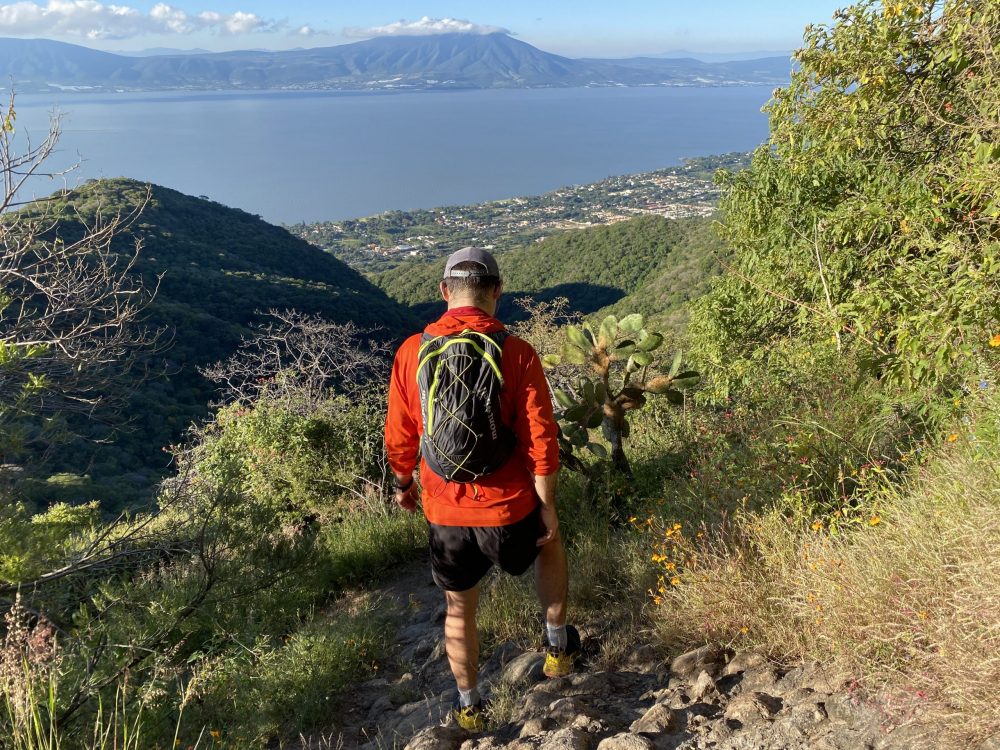
Montbell Cross Runner 15 in Mexico’s Sierra Madre.

I usually fill the shoulder pockets with a smartphone, sunscreen, lip balm, hand sanitizer, and maybe a snack or two.
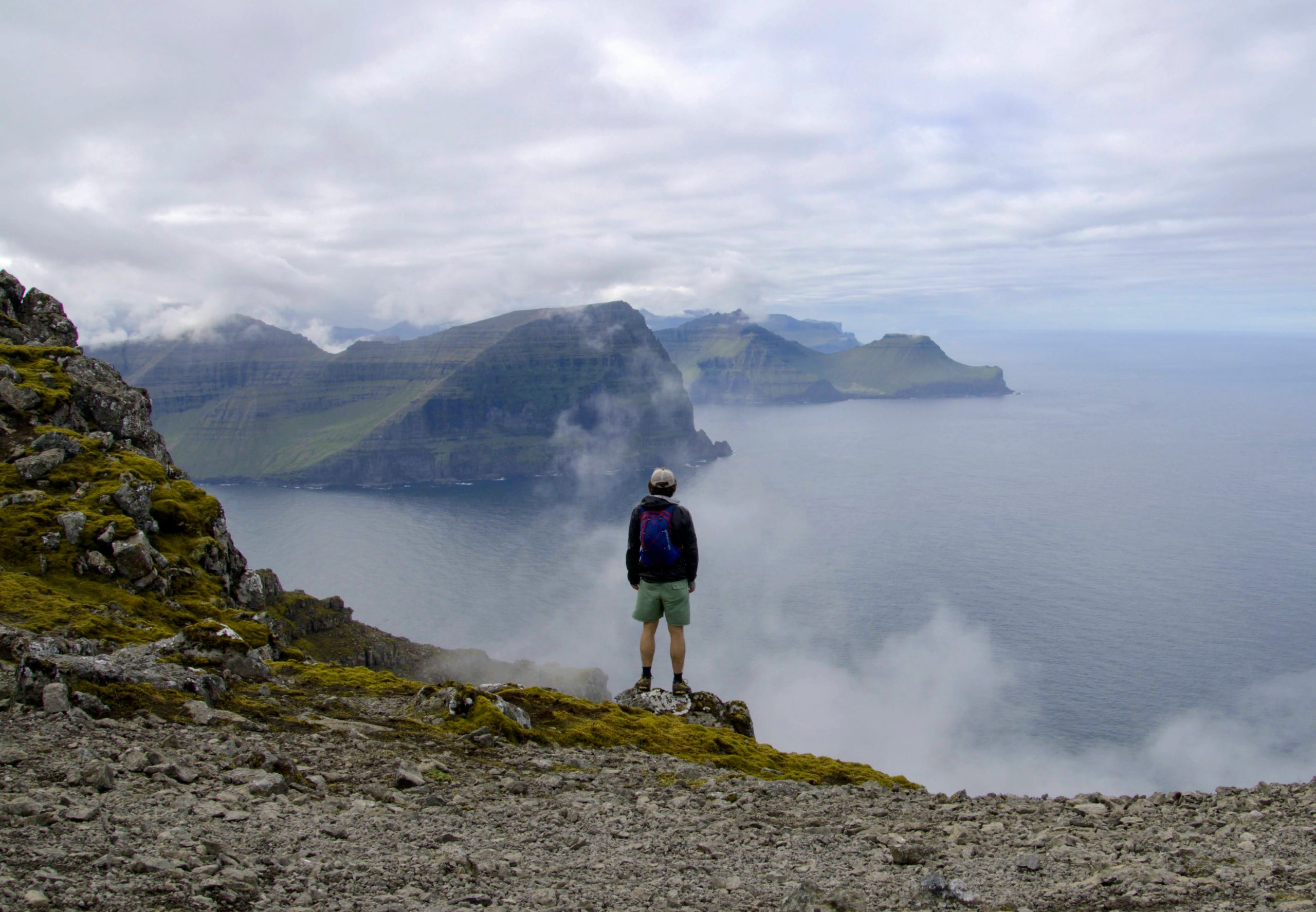
Gazing out from the edge of Cape Enniberg (754 m/2,474 ft), the world’s highest promontory (Faroe Islands, 2022).
Multi-day Trips (total pack weight usually below 24 lbs/11 kg)
Mountain Laurel Designs Burn 38 L (frameless)
Since 2009/10, I’ve used three different incarnations of the MLD Burn for a total distance north of 20,000 mi/32,187 km (including the Calendar Triple Crown/12 Long Walks in 2011/12). Over the years, the fabrics have changed, the volume and weight have increased, and the straps are wider and more cushioned, but it still sports the same slim profile and comfortable fit that I’ve always enjoyed. Here’s a review I wrote of the pack from 2016 (Note: Over the past two decades, MLD has established a well-earned reputation for producing consistently high-quality ultralight gear. That said, occasionally (maybe more than occasionally), you’ll hear some folks moan and groan about the company’s lead times. For my whimsical take on this and many other quirks of the ultralight backpacking community, see 50 Signs You May Have Taken Ultralight Backpacking Too Far).

One of the biggest loads I’ve carried in the Burn was during an approximately 240-mile (386 km) stretch between East Glacier and Helena, MT, on the Continental Divide Trail in August 2012 (Note: The Benchmark Ranch was closed because of fires at the time).
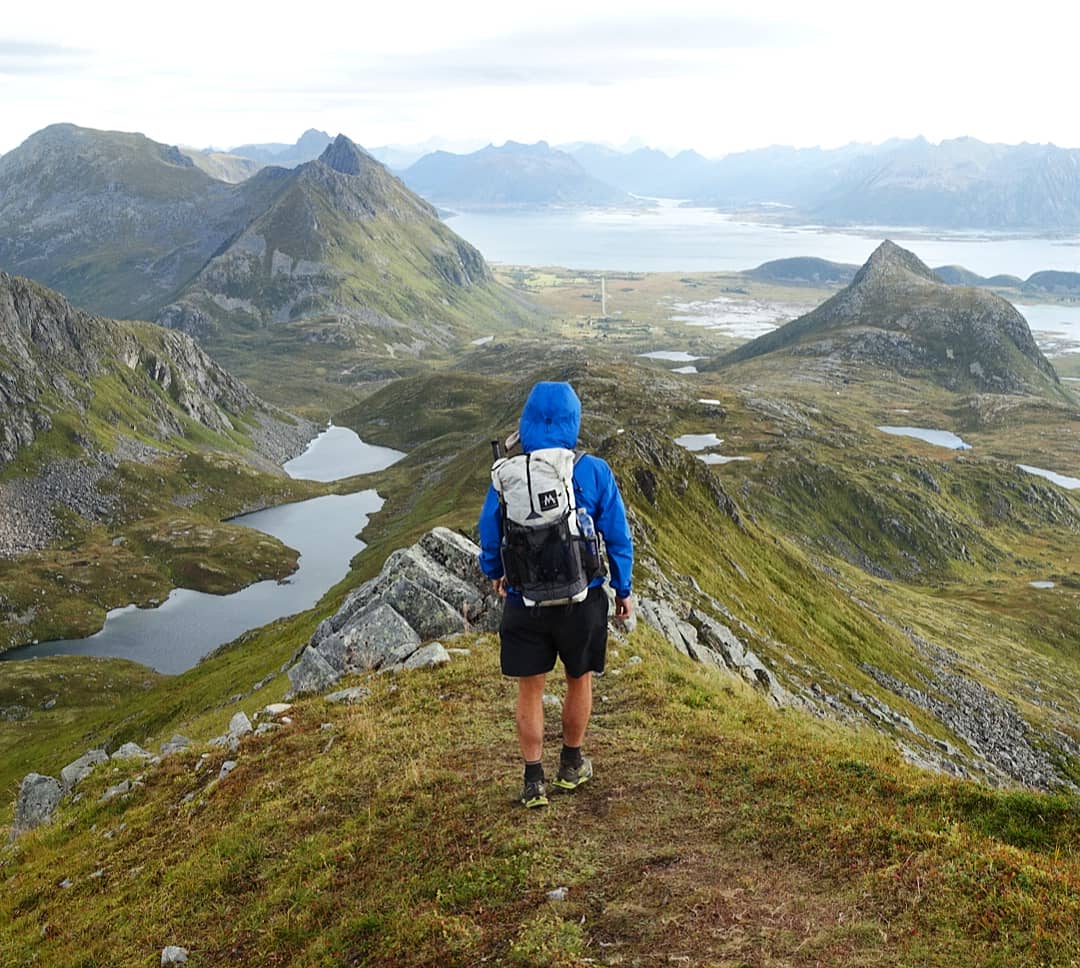
With a Dyneema version of the Burn on Norway’s Long Crossing of the Lofoten Islands (2018) (Note: As of 2023, the Burn now comes in either Ecopak UltraWeave or UltraGrid 200d RipStop).
Gossamer Gear Kumo 36 (frameless)
I was given this pack by Grant from Gossamer Gear at ALDHA West in 2014. My memory’s a bit hazy, but I think we may have been having a multi-beer conversation about Willie Nelson and the Austin music scene. Since those nebulous beginnings, I’ve taken the Kumo on the Colorado Trail (2015) and many short trips in the Sierra Madre. Indeed, to this day, I carry it every Wednesday to haul my fruit and veggies from the local farmer’s market. After eight years of regular usage, it still looks in great shape. If I was to pinpoint my favorite features of the Kumo (and Gossamer packs in general), the first things that come to mind are the wide shoulder straps, lid system, and overall comfort and durability. Retailing for US$170, the Kumo still rates as one of the best value-for-money ultralight packs on the market.

Rocking the Kumo on the Colorado Trail (2015).
Multi-week Trips (total pack weight regularly exceeds 24 lbs/11 kg)
Six Moon Designs Swift X (internal frame)
Since March 2020, I’ve logged over 2,000 miles (3,219 km) with the Swift X in the Sierra Madre, Northern Alaska, Greenland, and Lapland. During this period, it’s become my pack of choice for long-haul trips in which I’m regularly carrying heavy loads between 22 and 44 lbs (10-20 kg). I wrote a detailed review of the pack a couple of weeks ago.
The standout feature of the Swift X is the vest harness. Prior to using this pack, I hadn’t tried a running-style vest harness on anything other than a daypack. However, over the past few years, I’ve become a big fan of the torso-hugging fit and weight distribution it helps provide when negotiating tricky conditions (e.g., river fords, snowfields, tussocks, blowdowns, or scree slopes) while carrying a heavy load.
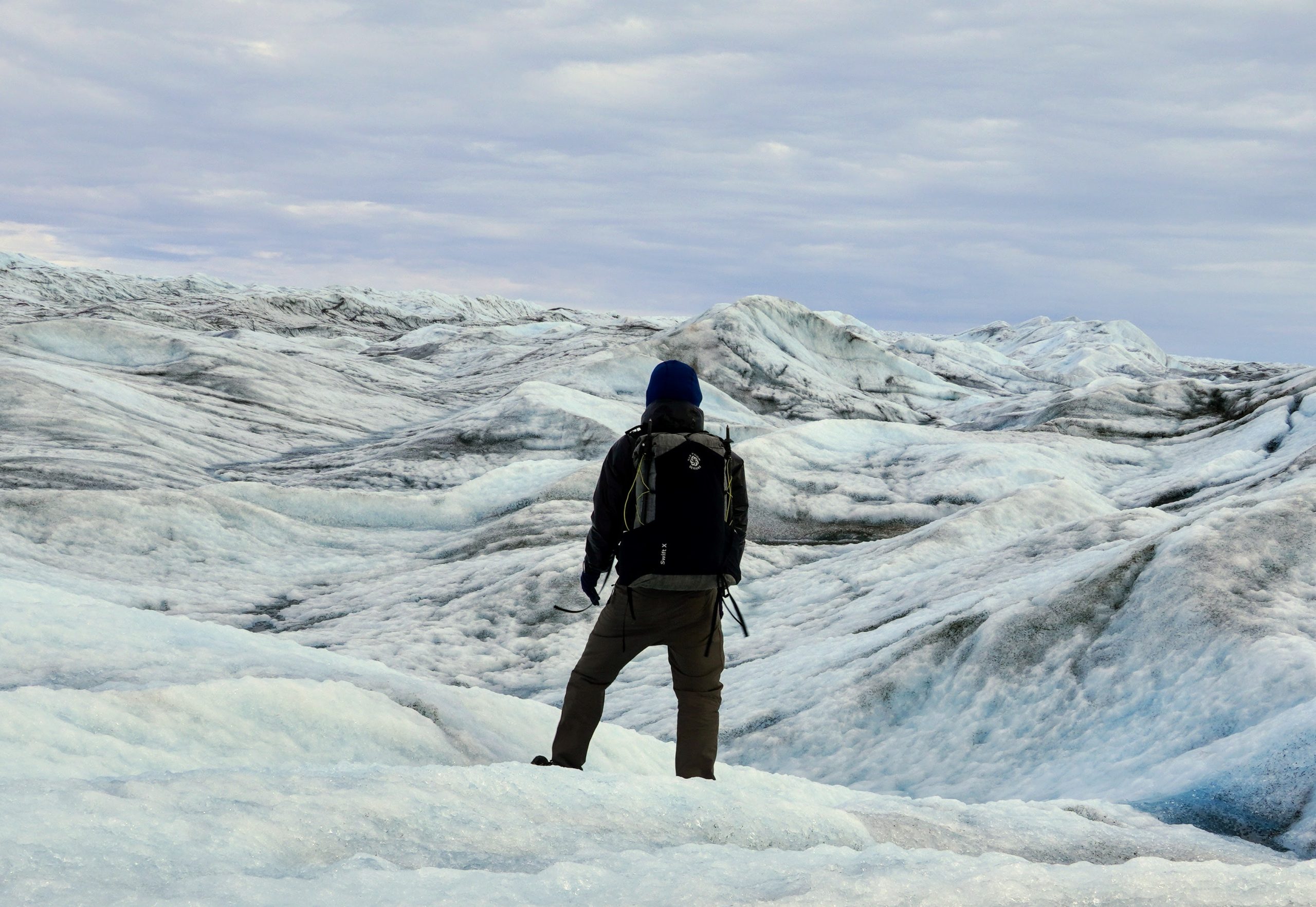
Yours truly on the Greenland Ice Cap – a not-to-be-missed supplemental section of the Arctic Circle Trail (September 2022) (Note: The Arctic Circle Trail and the Jotunheimen Loop pictured below are both featured in my upcoming book, Wanderlust Nordics, with Gestalten publications).
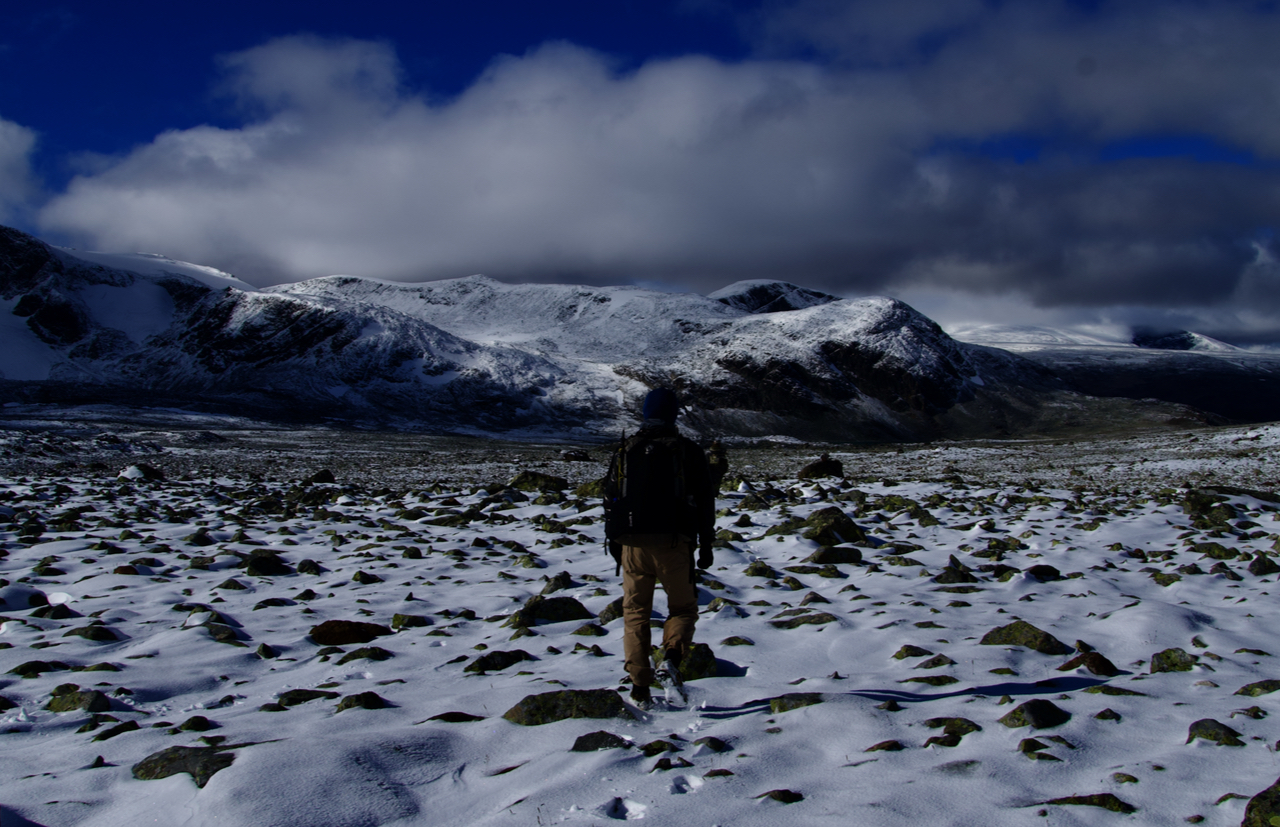
Crossing the Skautflye plateau during a loop hike around Norway’s Jotunheimen National Park (September 2022).
Hyperlite Mountain Gear 2400 Southwest (internal frame)
If I think about the HMG 2400 Southwest, the first word that comes to mind is “bombproof.” In 2016/17, I took this pack on a series of heavy-carry traverses, including the Colorado section of the Sangre de Cristo Range (starting weight 34 lb/15.4 kg), South Dakota’s Badlands (starting weight 44 lb/20 kg), Bolivia’s Altiplano (max weight 33 lb/11 kg), and the toughest of them all, a journey across Southwest Tasmania (starting weight 42 lb/19 kg). The 2400 Southwest held up very well throughout these challenging hikes, and even though I haven’t used it much in recent years, it still looks in good shape seven years after I first picked it up.
Besides its durability, the standout feature of the 2400 Southwest is its excellent weight transfer capability from shoulders to hips. Despite this, it seems weird that HMG has never added load lifters; there’s no question that they make a difference when your pack weight is regularly north of 22 lb/10 kg. Indeed, the lack of lifters, along with the vest harness and a little more internal volume, were the reasons I switched from the 2400 Southwest to the Swift X for my large-haul trips since 2020.

Trekking across the Salar de Uyuni during the Altiplano Traverse (Bolivia 2017).

The HMG Southwest 2400 during a 16 day food carry on the Southwest Tasmania Traverse (2016).

Crossing South Dakota’s Badlands National Park (2016).
Comparable Backpacks (Day, Frameless, Internal Frame)
The models listed below are all well-regarded among experienced ramblers and are in the same ballpark as my own packs in regard to volume, quality of materials, and workmanship. A handful are made by large companies such as REI and Osprey, but most are produced by smaller, cottage industry-type manufacturers. They are not listed in any particular order other than alphabetically:
5 Comparable Daypacks
- Granite Gear Dagger 22
- Gossamer Gear Minamalist 19
- Osprey Talon 22
- REI Flash 18
- Lightweight generic school bag that you’ve
pinchedborrowed from your kid/nephew/niece/younger sibling. Not as many bells and whistles as the above-mentioned models, but for a few hours out in the boonies, 95 percent of the time, they’ll do the trick.
5 Comparable Frameless Packs (35-40L)
5 Comparable Internal Framed Packs (50-55L)
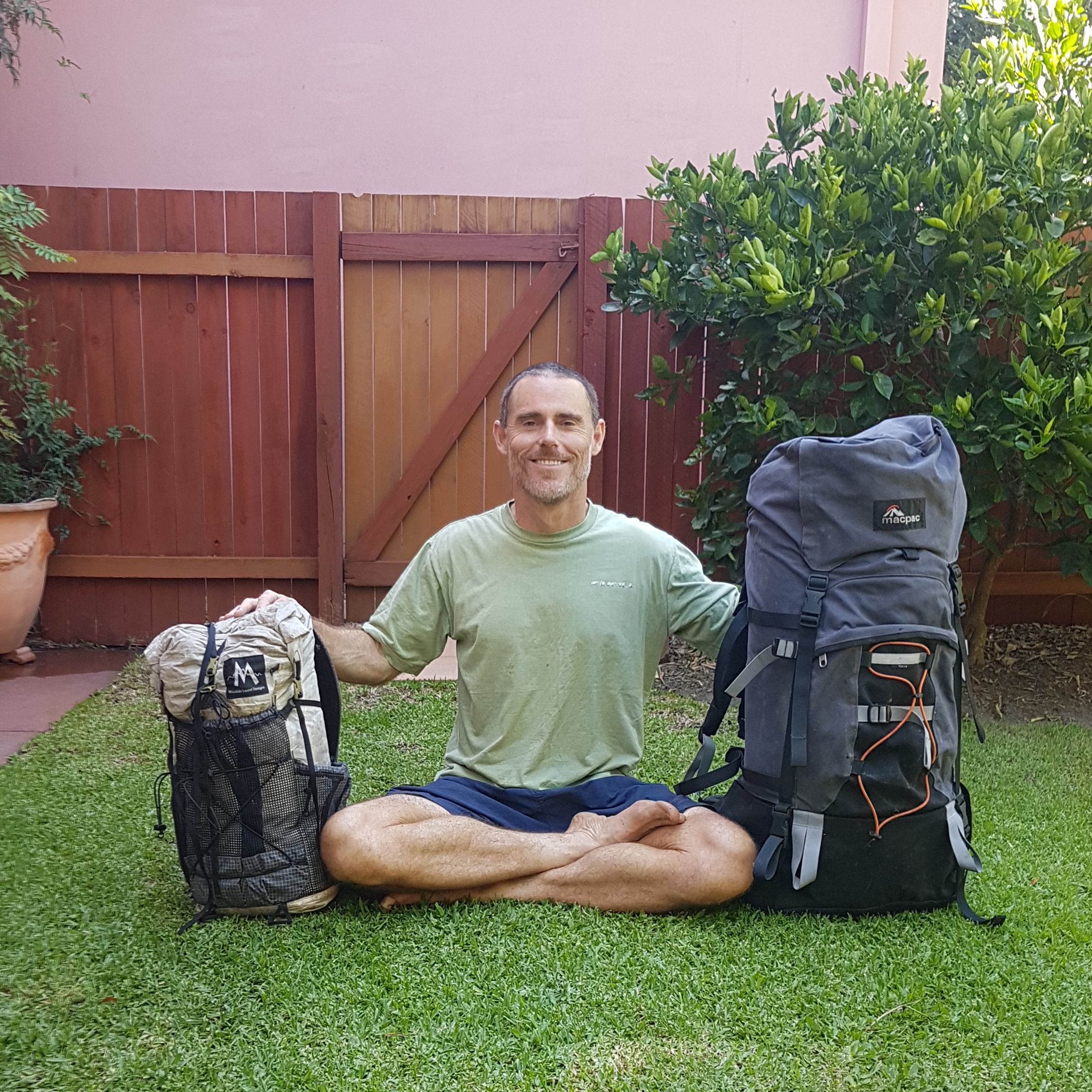
The Old and the New(ish)…………….Macpac Torre (85 L) and MLD Burn (38 L). I carried the load-hauling monster on the right for a brief period in the mid/late 1990s. My back and knees hurt just thinking about it.
Related Articles
Disclaimer: All of the five backpacks featured above were freebies. They were given to me by ultralight/lightweight backpacking gear companies that I’ve partnered with at one time or another since the 2000s. I was under no obligation to write a review for any of the packs, and the opinions expressed are my own.
Disclosure: This post contains some affiliate links, which means The Hiking Life receives a small commission if you purchase an item after clicking on one of the links. This comes at no additional cost to the reader and helps to support the website in its continuing goal to create quality content for backpackers and hikers.
Discover more from The Hiking Life
Subscribe to get the latest posts sent to your email.

